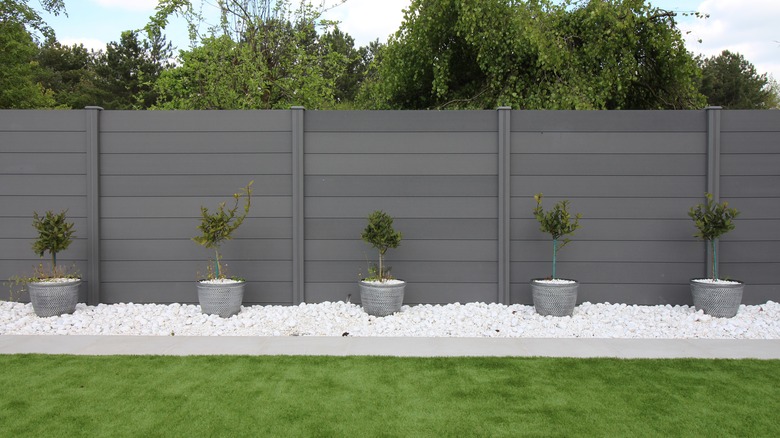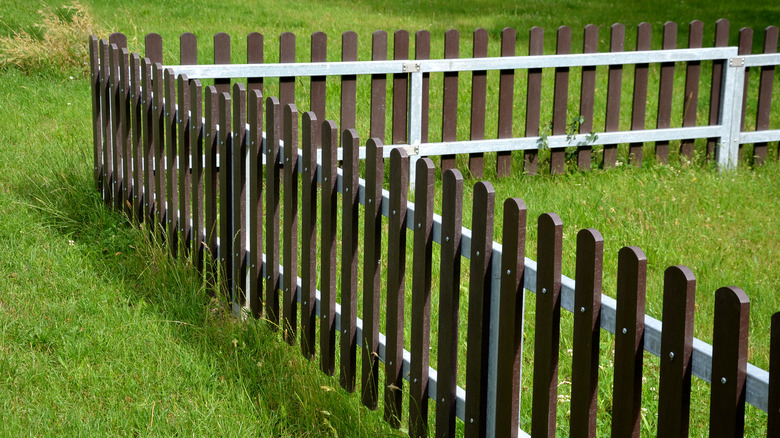What Are The Downsides Of Composite Fencing?
There are a lot of reasons to love composite fencing and it's well worth considering when trying to choose the right backyard fencing for your family's lifestyle. Composite fencing is made from a combination of reclaimed wood fibers and recycled plastic and the material is durable, rot-resistant, and long-lasting. You can expect a composite fence to last between 25 and 30 years. On top of this, this type of fencing is easy to maintain and you won't have to treat and stain it regularly like you'll need to with different types of wood fences. The material is pretty eco-friendly — it's produced sustainably and made from recycled materials.
Despite these big advantages, however, it's important to realize that composite fencing has its pros and cons. There are some drawbacks to installing this type of fencing and you'll want to consider them before making a final decision on the material for your project. Notably, composite fencing is on the expensive side and although it's more durable than other materials, it does have its weak spots.
Where composite fencing falls short
The cost of composite fencing is much greater than many other common materials, at least initially. Fencing materials such as vinyl, metal, and wood won't cost you as much during the initial installation. However, materials such as wood will cost more as time goes on, thanks to the added maintenance you'll need to take care of. You may not want to install composite fencing if you're on a tight budget and are planning to use fencing to instantly boost your curb appeal.
You should also know that composite fence materials vary. Not all manufacturers and suppliers are the same and some products are lacking. Some composite fencing materials are less durable than others.
Also, be aware that although composite fencing is somewhat resistant to fading from UV rays, it's not perfect. This type of material will fade naturally in the first six months and will fade a bit more with exposure to the sun as time goes on. This is especially true with darker-colored boards.
Exposure to the sun may also cause composite fencing to expand and contract. It may expand in high temperatures or shrink in colder temperatures, slightly altering the fencing. However, changes won't be as extreme as with some other materials — it won't crack or warp as significantly as a wood fence could.
Despite these disadvantages, composite fencing can still be a good choice, but you should consider all of these potential drawbacks before starting your project.

